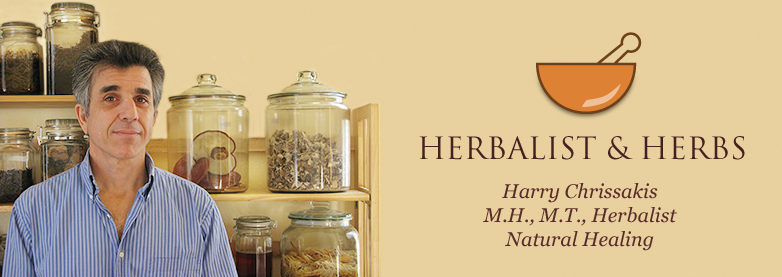The Guardian of the Cell: Gene P.53
By HARRY CHRISSAKIS @ Herbalist and Herbs
The genesis of cancer in our bodies starts at the abstract, but real, genetic structures. Genes are the structures that ultimately decide what the cell will do and how it will do it. The two basic hallmarks of a cancer cell is attempted immortality and unrestricted cell division
The major thrust of the cancer cell is to try to become an independent life form within our bodies: breaking free from built in controls inside the cell, from controls communicated to it by other cells (cell colony) and from being controlled by the immune system. Total and complete criminality
A major control system within the cell is the gene P 53. The life span of the cell is pre-programmed. Each cell will produce approximately 35-40 exact daughter cells, after which the cell is down regulated and ultimately destroyed. This process is under the control of P 53. If in the process of cell division something goes wrong, P 53 will stop the cell from dividing and try to repair the problem. If the cell cannot be repaired, P 53 will induce cell suicide ( apoptosis ). This is a really big thing in the prevention of cancer. If this part of the cell works properly no mutations will be passed on. If no mutations are passed on, then a cancer cell cannot be formed. P 53 is a damaged site in 50-70 % of all cancers.
Let’s watch a short video about P 53
Within the watery portion of the cell (cytoplasm) are a number of structures that are intrinsic to the functioning and health of the cell. The mitochondria is one of them and its function is to produce the energy for the life of the cell.
In the process of energy production, a lot of free radicals are produced. These are unstable molecules that will pull electrons from any surrounding structures in order to stabilize them selves( this is known oxidative stress, oxidation or free radical damage ).
A certain amount of free radicals serve a number of useful processes within the cell (one of those is to act as a chemical switch, to turn on or off certain cellular functions ). If the concentration of free radicals goes above a certain level, oxidative damage begins to occur.
If this happens in the D.N.A and in particular to the P 53 gene site, then a critical protective function is lost within the cell and it will pass that damage on to its daughter cell. At this point instead of protecting the cell ( gene sites that do this are called tumor suppressor genes ) damaged P 53 promotes cancer ( gene sites that do this are known as onco-genes ).
A second way that P53 may be damaged is through toxic metals inside the cell (cadmium specifically) or necessary trace metals in too high a concentration in the cell; copper in particular. Cancer cells also use excess amounts of intra cellular copper to grow extra venous structures in order to feed them selves.
“Testing for toxic and or excess trace metal should be a standard diagnostic test in a cancer protocol. This can be easily accomplished through hair analysis, which is both inexpensive and painless.”
There are a number of ways that natural medicine can assist P 53.
First is prevention. In general ,all anti- oxidants prevent free radical damage. To be specific, quercitin and the fractions of ginger( known as gingerols ) protect and strengthen P 53.
If the cell is already damaged or is cancerous the next part of the strategy is to try to normalize the cell.
If P53 can be normalized then 2 things may possibly happen. P 53 may be able to repair the cell or if it can not repair it, P 53 can induce cell suicide. Either process is a desired result. Quercitin and gingerols help this P 53 normalization process. Other natural substances that positively effect P53 are melatonin, ginseng, curcumin and resveratrol. Many other anti oxidants help this process in a more general way. These anti oxidants may be gotten through the combination of diet and supplementation. Natural protocols to assist the cancer patient include these as well. Strategies produced by the application of natural medicine and modern analytical and diagnostic technology can and should be target specific. This is woefully lacking in both assistive and standard practice oncology as well. The ability to accomplish this is already there and continuing to evolve. In the case of P 53, the diagnostic technology is in place, but is rarely applied.
Please write your question and comments below.
Thanks for reading.
